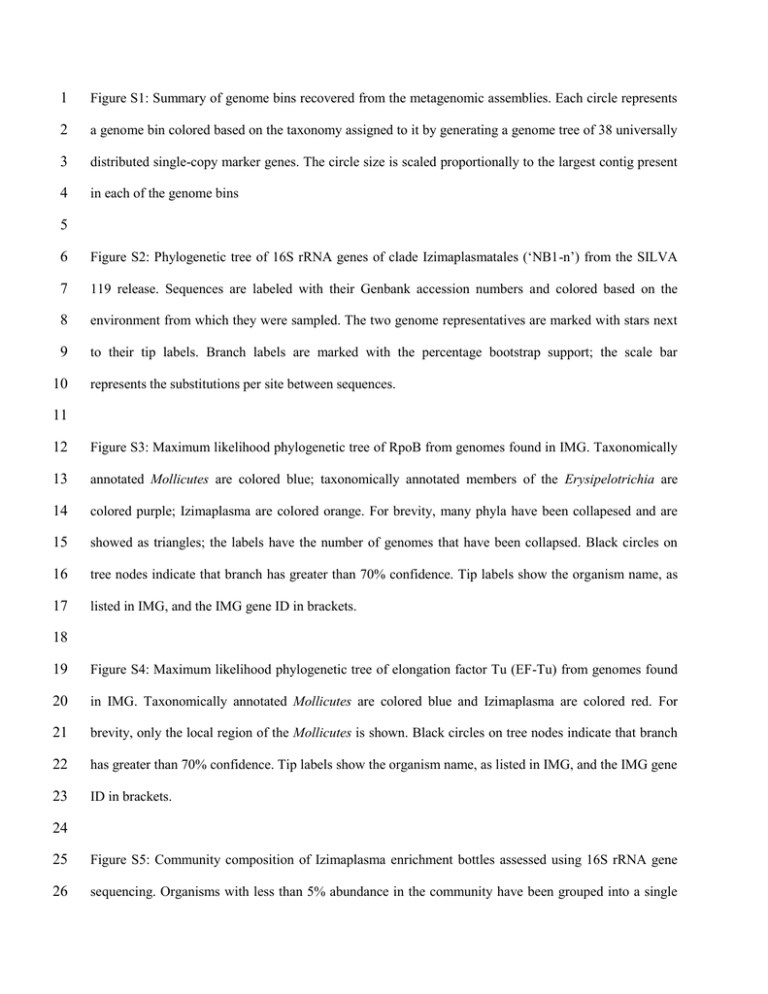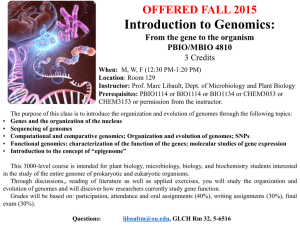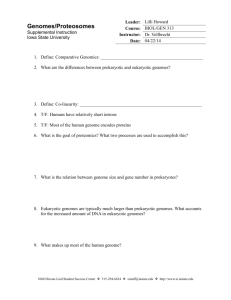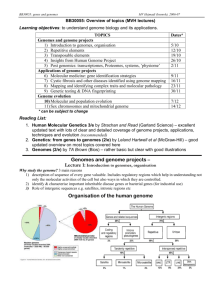1 2
advertisement

1 Figure S1: Summary of genome bins recovered from the metagenomic assemblies. Each circle represents 2 a genome bin colored based on the taxonomy assigned to it by generating a genome tree of 38 universally 3 distributed single-copy marker genes. The circle size is scaled proportionally to the largest contig present 4 in each of the genome bins 5 6 Figure S2: Phylogenetic tree of 16S rRNA genes of clade Izimaplasmatales (‘NB1-n’) from the SILVA 7 119 release. Sequences are labeled with their Genbank accession numbers and colored based on the 8 environment from which they were sampled. The two genome representatives are marked with stars next 9 to their tip labels. Branch labels are marked with the percentage bootstrap support; the scale bar 10 represents the substitutions per site between sequences. 11 12 Figure S3: Maximum likelihood phylogenetic tree of RpoB from genomes found in IMG. Taxonomically 13 annotated Mollicutes are colored blue; taxonomically annotated members of the Erysipelotrichia are 14 colored purple; Izimaplasma are colored orange. For brevity, many phyla have been collapesed and are 15 showed as triangles; the labels have the number of genomes that have been collapsed. Black circles on 16 tree nodes indicate that branch has greater than 70% confidence. Tip labels show the organism name, as 17 listed in IMG, and the IMG gene ID in brackets. 18 19 Figure S4: Maximum likelihood phylogenetic tree of elongation factor Tu (EF-Tu) from genomes found 20 in IMG. Taxonomically annotated Mollicutes are colored blue and Izimaplasma are colored red. For 21 brevity, only the local region of the Mollicutes is shown. Black circles on tree nodes indicate that branch 22 has greater than 70% confidence. Tip labels show the organism name, as listed in IMG, and the IMG gene 23 ID in brackets. 24 25 Figure S5: Community composition of Izimaplasma enrichment bottles assessed using 16S rRNA gene 26 sequencing. Organisms with less than 5% abundance in the community have been grouped into a single 27 category (‘Other < 5%’). The original inoculum was sequenced with four replicate enrichment bottles 28 labelled Glu 1-4. 29 30 Figure S6: Comparison of genome size and percentage of protein coding DNA from all genomes present 31 in IMG 4.0 and Izimaplasma. The other mollicute genomes, obligate intracellular symbionts, certain free- 32 living marine taxa that have undergone genome streamlining and single amplified genomes (SAG) 33 previously reported by Swann et. al (2012) are highlighted. The symbionts and many of the mollicute 34 genomes, which are also host-associated have smaller genomes and higher percentages of non-coding 35 DNA compared to Izimaplasma. 36 37 Figure S7: Sequence logo of genetic code for Izimaplasma sp. HR1 (A) and Izimaplasma sp. HR2 (B) as 38 predicted by FACIL. The probability of each amino acid being encoded by each codon is represented by 39 the height of the letter, while the red line indicates the prediction of stop codons. In most mollicutes the 40 TGA codon translates to tryptophan, however both Izimaplasma genomes translate TGA to a stop codon. 41 42 Figure S8: Presence or absence of unusual Izimaplasma metabolic features in other Mollicutes. 43 Homologous genes are shown in rows of the matrix where black boxes indicate the presence of an 44 ortholog. The rows are ordered based on the broad functional categories listed to the left of the y-axis, 45 refer to Table S2 for a complete listing of the gene functions for each row. The genomes along the x-axis 46 are ordered based on the phylogeny of the organism determined based on the genome tree of 38 47 universally distributed single-copy genes. Bacillus subtilis subsp. subtilis 168 was used as an outgroup for 48 the ortholog detection. 49 50 Figure S9: Maximum likelihood phylogenetic tree of AppC proteins from Izimaplasma and representative 51 sequences previously deposited into the Uniprot database. Scale bar indicates the substitutions per site. 52 53 Table S1: Summary genome assembly statistics. 54 55 56 57 58 59 Table S2: Gene products for rows numbered in Figure S6.





